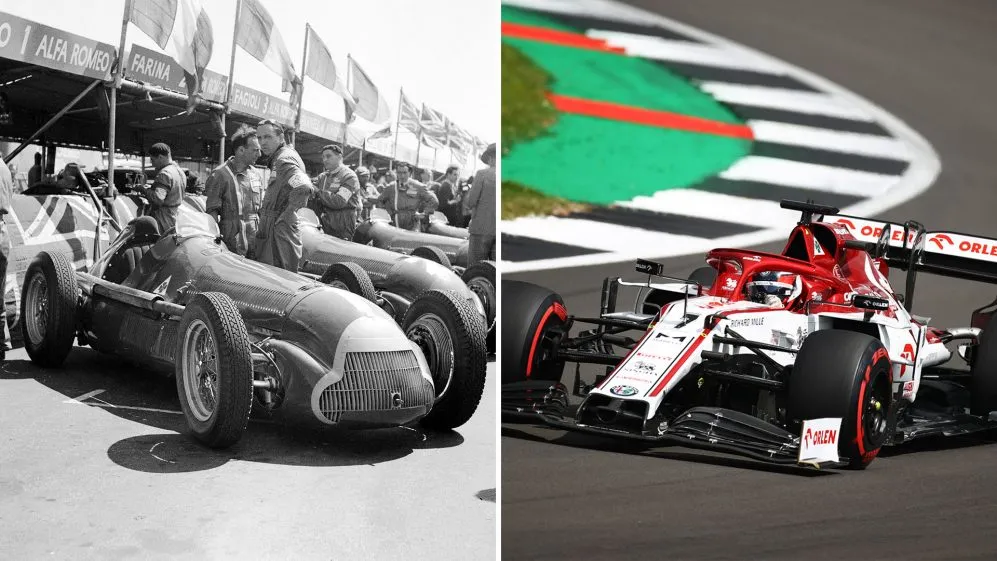
En el 2022 se cumplirá el 75° Aniversario de la Fórmula 1. Tres cuartos de siglo a través de los cuáles han desfilado grandes campeones y grandes equipos, grandes alegrías, sorpresas, rivalidades y también grandes desilusiones.
A través de esta espléndida comunidad de @fulldeportes que en #HIVE se ha ganado, a fuerza de luchar duramente, un lugar privilegiado no solo en el aspecto deportivo sino también en el trending general de #HIVE, pretendo hacer un recorrido hacia atrás, década por década, de esta apasionante categoría del automovilismo deportivo mundial que agrupa a millones de simpatizantes en todo el mundo.

2022 will mark the 75th anniversary of Formula 1. Three quarters of a century of great champions and great teams, great joys, surprises, rivalries and also great disappointments.
Through this splendid community of @fulldeportes that in #HIVE has earned, by dint of hard work, a privileged place not only in the sporting aspect but also in the general trending of #HIVE, I intend to take a look back, decade by decade, of this exciting category of world motorsport that brings together millions of supporters around the world.
Los orígenes de la Fórmula 1 / The origins of Formula 1.
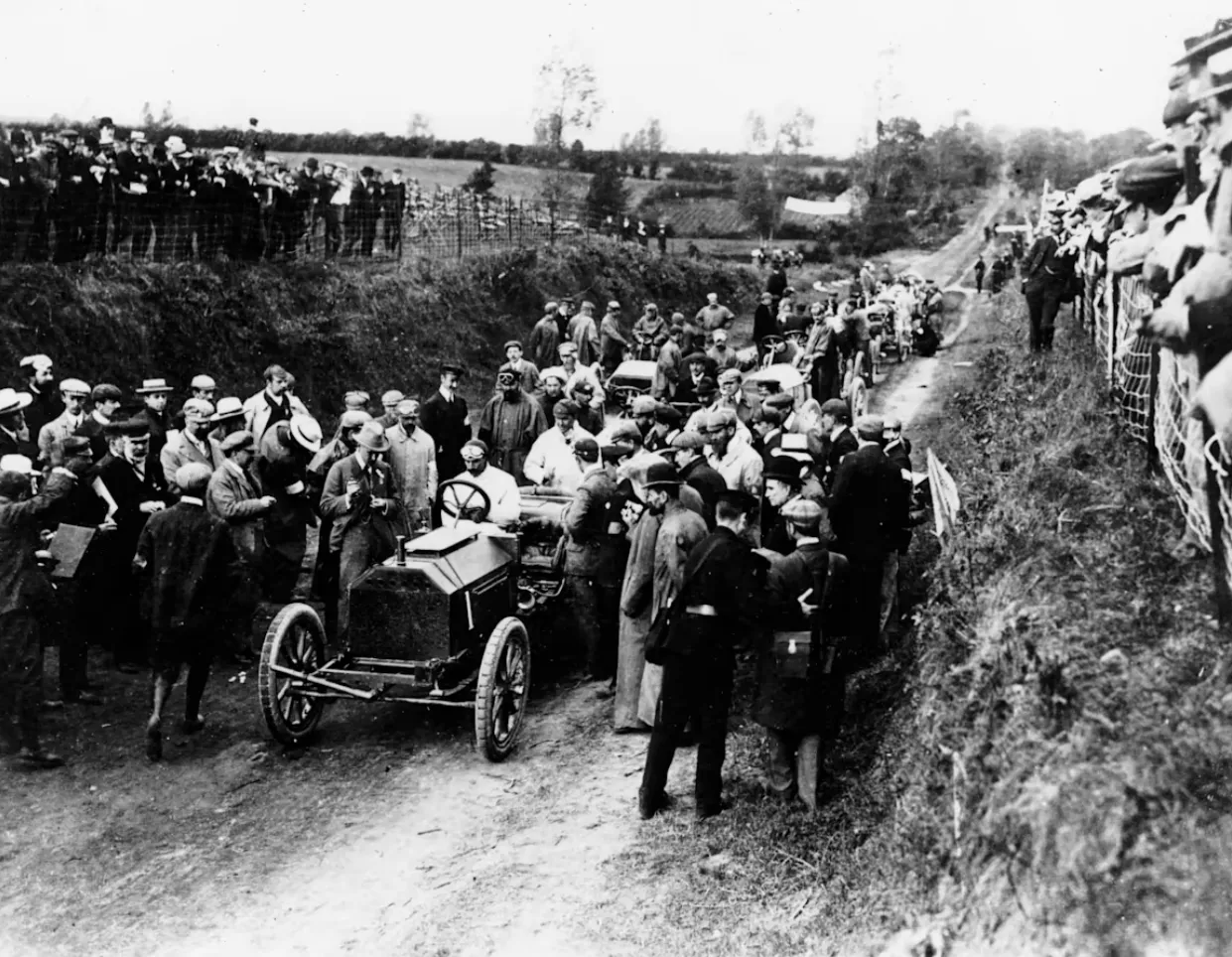
La Fórmula 1 nace en el lejano 1948 poco después de terminada la Segunda Guerra Mundial, cuando los horrores de Hiroshima y Nagasaki todavía estaban presente en la mente no sólo de los japoneses sino de todo el mundo, especialmente Europa.
El objetivo, algunas veces manifiesto y otras veces un poco menos, era doble.
Por un lado comenzar a crear una idea de los deportes, en este caso el automovilismo, como medio de enaltecer la cultura deportiva y de ir devolviendo, de a poco, a todos los habitantes del mundo sumergidos en un mar de angustias y tristezas, un poco de la alegría perdida.
Por otro lado comenzar a sentar los cimientos de una nueva industria, la automovilística deportiva, que había sido totalmente abandonada durante casi una década, en la cuál la fabricación de vehículos era predominantemente militar y limitada a las exigencias bélicas.
Ya antes del inicio de la guerra habían comenzado a organizarse carreras automovilísticas pero en general limitadas a sus países de origen, careciendo de trascendencia mundial.
En 1900 James Gordon Bennett, Jr., hombre de negocios ypropietario de los periódicos New York Herald y International Herald Tribune en París aprovecha de sus medios para difundir una carrera anual que atrajo competidores internacionales, patrocinada por sus diarios y a la que le dio un nombre verdaderamente altisonante: Copa Gordon Bennett de Carreras de Autos en Europa.
Marcaría el inicio, un camino que poco años más tarde seguiría, en 1904, el acaudalado William Kissam Vanderbilt II quien lanzóala Copa Vanderbilt en los Estados Unidos, más precisamente en Long Island, Nueva York.
Con diferente formas comienzan a organizarse en Europa distintas carreras de autos bajo la forma de Grandes Premios, entre las cuales merecen ser destacadas las organizadas por el Club del Automóvil de Francia (CAF) a la vez que comienzan a construirse y utilizarse autódromos que hoy en día son un pedazo de historia de la Fórmula 1: Indianápolis, Le Mans, Monza y otros que han sido abandonados o reestructurados como el circuito Dieppe (Francia), el Kaiserpreis (Alemania) y el de Brooklands (Inglaterra) entre otros.
La Segunda Guerra Mundial llega en un período de expansión de las carreras de autos en Europa. Nombres y marcas como Bugatti, Maserati, Alfa Romeo, Ferrari, Porsche, Miller, Mercedes-Benz eran ya ampliamente conocidos comienzan a cambiar el diseño y la ingeniería de los automóviles.
Se acerca una nueva guerra que va a interrumpir el conflicto bélico, para decolar nuevamente una década más tarde con Italia en primera fila.
En el año 1949 se establece la sede central (hoy FIA9 en Paris y es confeccionado el primer campeonato de la nueva categoría para el año siguiente, 1950.
Es el inicio de una nueva era en las competencias deportivas automovilísticas mundiales.

Formula 1 was born in the distant 1948 shortly after the end of World War II, when the horrors of Hiroshima and Nagasaki were still present in the minds not only of the Japanese but of the whole world, especially Europe.
The objective, sometimes overt and sometimes a little less so, was twofold.
On the one hand, to begin to create an idea of sports, in this case motor racing, as a means of exalting the sporting culture and to give back, little by little, to all the inhabitants of the world submerged in a sea of anguish and sadness, a little of the lost joy.
On the other hand, to begin to lay the foundations of a new industry, the automobile sports industry, which had been totally abandoned for almost a decade, in which the manufacture of vehicles was predominantly military and limited to the requirements of war.
Even before the outbreak of the war, automobile races had begun to be organized, but in general they were limited to their countries of origin and lacked worldwide significance.
In 1900, James Gordon Bennett, Jr., businessman and owner of the New York Herald and International Herald Tribune newspapers in Paris, took advantage of his means to promote an annual race that attracted international competitors, sponsored by his newspapers and to which he gave a truly high-flown name: Gordon Bennett European Auto Racing Cup.
It would mark the beginning of a path that a few years later, in 1904, would be followed by the wealthy William Kissam Vanderbilt II, who launched the Vanderbilt Cup in the United States, more precisely in Long Island, New York.
In different forms, different car races began to be organized in Europe in the form of Grand Prix, among which those organized by the Automobile Club of France (CAF) stand out. At the same time, racetracks that today are a piece of Formula 1 history began to be built and used: Indianapolis, Le Mans, Monza and others that have been abandoned or restructured, such as the Dieppe circuit (France), the Kaiserpreis (Germany) and Brooklands (England), among others.
The Second World War came during a period of expansion of car racing in Europe. Names and brands such as Bugatti, Maserati, Alfa Romeo, Ferrari, Porsche, Miller, Mercedes-Benz were already widely known and began to change the design and engineering of automobiles.
A new war is approaching, which will interrupt the warlike conflict, only to break out again a decade later with Italy at the forefront.
In 1949 the headquarters (today FIA9) was established in Paris and the first championship of the new category was drawn up for the following year, 1950.
It was the beginning of a new era in world motorsport competitions.
Primera década con dominio italiano y Fangio como figura estelar. / First decade with Italian dominance and Fangio as a star figure.
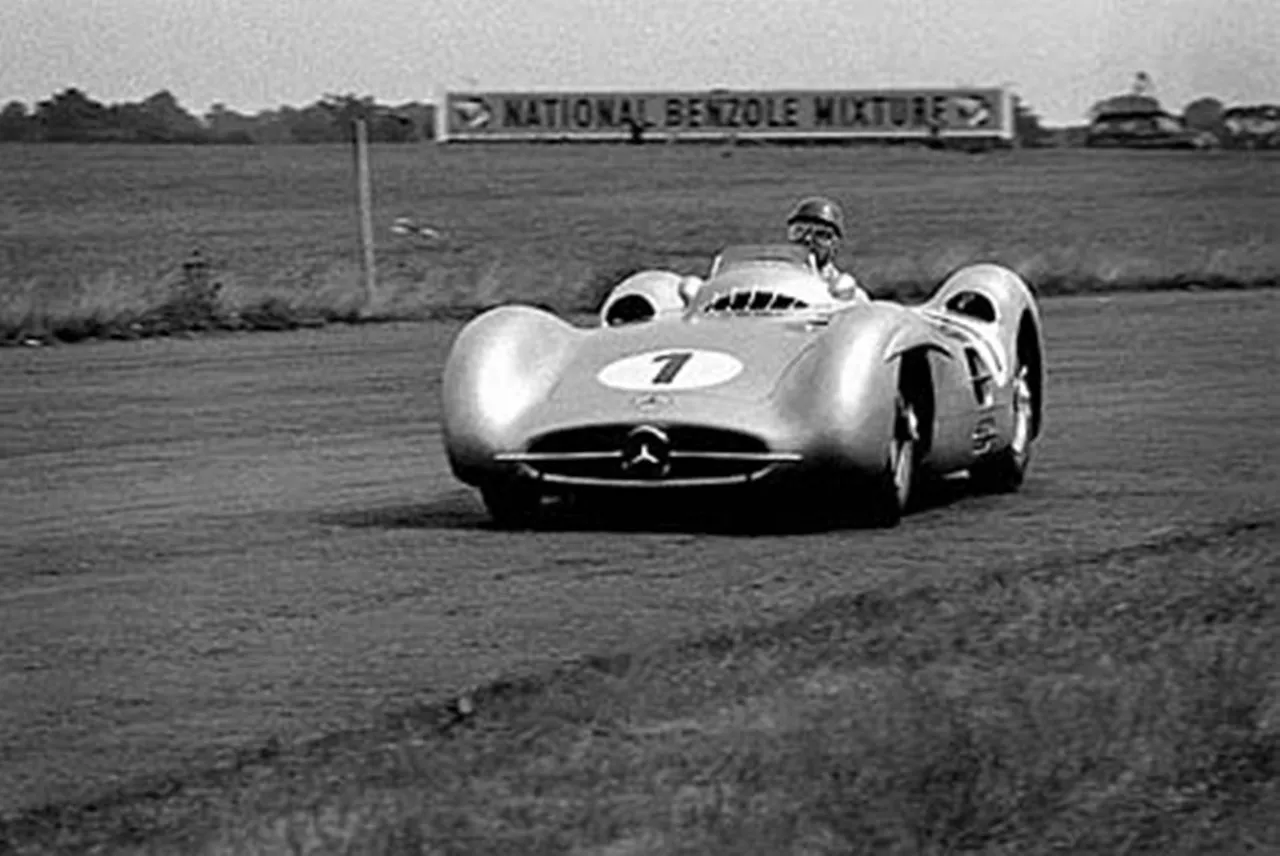
En la última parte de las carreras deportivas de autos antes de la Guerra en Europa Italia había demostrado de haber sido el primer país en hacer las cosas en serio.
No en vano es un auto italiano, el Alfa Romeo 158 que gana el primer campeonato mundial de F1 de la historia en 1950 con la conducción del inolvidable Nino Farina.
Su compatriota Alberto Ascari (la curva del circuito de Monza lleva su nombre exactamente en el lugar don ocurrió el accidente que provocó su muerte) gana los campeonatos en 1952 y 1953 con la Ferrari 500 y comienza la leyenda de Ferrarila casa de Maranello.
En el medio, entre tantos italianos, un argentino, Juan Manuel Fangio, que gana el primero de sus cinco títulos mundiales con el Alfa Romeo 159 sucesor del 158 ganador con Farina.
De ahí en más comienza la era Fangio. Los otros cuatro títulos los gana corriendo con Mercedes en dos oportunidades (1954 y 1955 aunque la primera parte de 1954 lo hace con Maserati), Ferrari en 1956 aunque el auto era un Lancia-Ferrari D59 y Maserati en 1957 cerrando un trienio legendario.
El gran derrotado en esta década "de oro" fue el británico Stirling Moss, que ganó muchas carreras pero nunca consiguió ganar el título.
En 1958 el título va a Mike Hawthorn de nuevo con Ferrari convirtiéndose en el primer británico en ganar el campeonato del mundo de la Fórmula 1
Cierra la década Jack Brabham que gana los campeonatos de 1959 y 1960 en forma consecutiva, con el Cooper Climax, aunque después formará su propio equipo.
Medio siglo más tarde Michael Schumacher en el año 2022 logra igualar la marca del "Chueco" Fancio y superarla un año más tarde.
Lewis Hamilton logra la misma hazaña en el 2017.
Aún hoy, a 70 años de su primer triunfo Juan Manuel Fangio sigue ocupando (y quizás por cuanto tiempo aún) el podio de honor de los pilotos de más títulos de Fórmula 1 han ganado desde aquel lejano 1950.
Lo encabezan hasta el momento Hamilton y Schumacher con 7 títulos.
En el tercer lugar el inolvidable "Chueco" con 5.

In the last part of the pre-war car racing in Europe, Italy had proved to be the first country to do things seriously.
It was not for nothing that an Italian car, the Alfa Romeo 158, won the first F1 world championship in history in 1950, driven by the unforgettable Nino Farina.
His compatriot Alberto Ascari (the curve of the Monza circuit bears his name exactly where the accident that caused his death occurred) wins the championships in 1952 and 1953 with the Ferrari 500 and begins the legend of Ferrari, home of Maranello.
In the middle, among so many Italians, an Argentinean, Juan Manuel Fangio, who won the first of his five world titles with the Alfa Romeo 159 successor of the 158 winner with Farina.
From then on, the Fangio era began. He won the other four titles racing with Mercedes on two occasions (1954 and 1955, although the first part of 1954 was with Maserati), Ferrari in 1956, although the car was a Lancia-Ferrari D59, and Maserati in 1957, closing a legendary triennium.
The great loser in this "golden" decade was the British Stirling Moss, who won many races but never managed to win the title.
In 1958 the title went to Mike Hawthorn again with Ferrari, becoming the first British driver to win the Formula 1 world championship.
Closes the decade Jack Brabham who wins the 1959 and 1960 championships consecutively, with the Cooper Climax, although he will later form his own team.
Half a century later, Michael Schumacher in the year 2022 will equal "Chueco" Fancio's record and surpass it one year later.
Lewis Hamilton achieves the same feat in 2017.
Even today, 70 years after his first triumph Juan Manuel Fangio still occupies (and perhaps for how long yet) the podium of honor of the drivers who have won the most Formula 1 titles since that distant 1950.
So far, Hamilton and Schumacher lead the list with 7 titles.
In third place is the unforgettable "Chueco" with 5 titles.
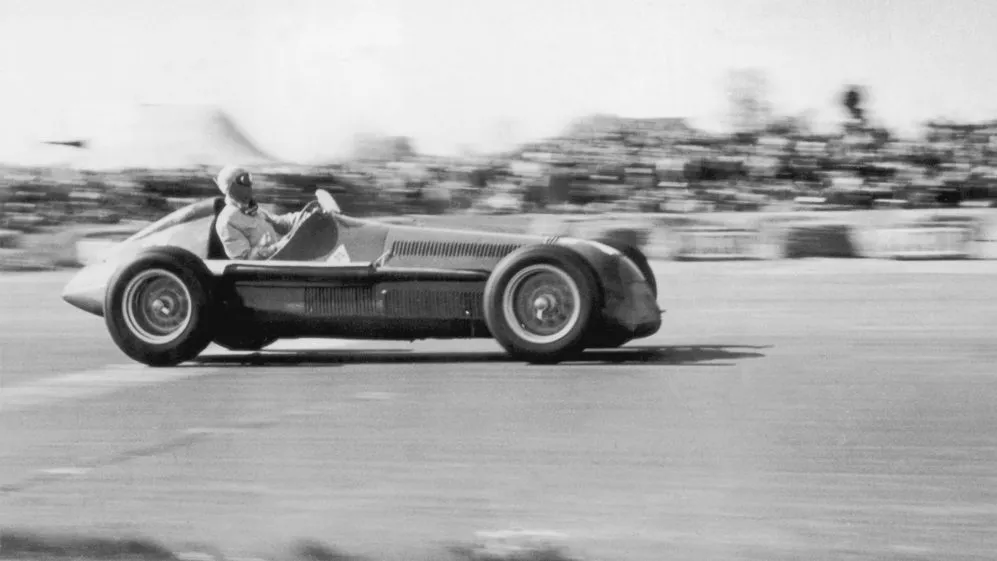
Si les gusta el análisis técnico de los trazados de todos los circuitos que forman el calendario de la Fórmula 1 les recomiendo la lectura de los posts de @acont siempre muy bien estructurados y desarrollados con un criterio puramente técnico.
El último publicado se refiere al Circuito de Estambul (Turquia) y lo encuentran en este post:
If you like the technical analysis of the layouts of all the circuits that make up the Formula 1 calendar we recommend reading the posts of @acont always very well structured and developed with a purely technical criteria.
The last one published refers to the Istanbul Circuit (Turkey) and you can find it in this post:
| Análisis del circuito de Estambul (Turquía) — Analysis of the Istambul circuit (Turkey) |  |
|---|
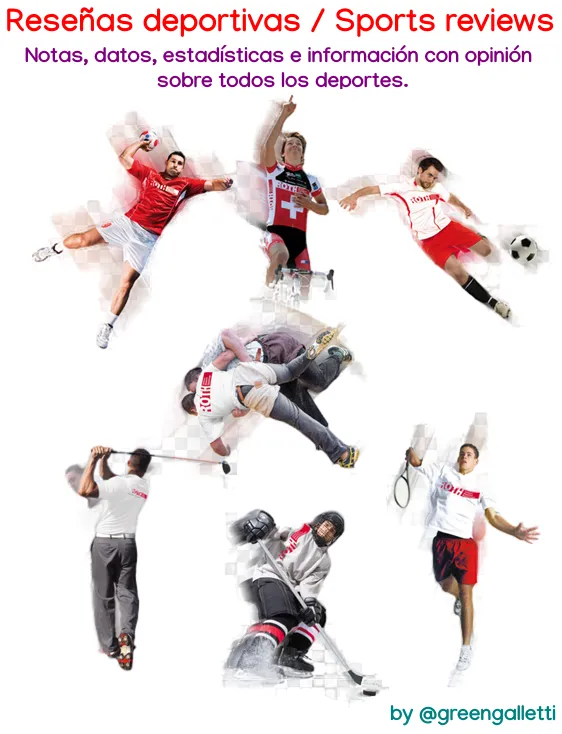
El separador de párrafos -modificado por el autor- es propiedad del usuario @thepeakstudio. A él mi agradecimiento por el excelente material gráfico puesto a disposición de la Comunidad.
The paragraph separator -modified by the author- is property of the user @thepeakstudio. To him my thanks for the excellent graphic material made available to the Community.
El banner titulado Reseñas Deportivas / Sports Reviews personalizado por el autor es propiedad de PNGWing.
The banner titled Reseñas Deportivas / Sports Reviews customized by the author is property of PNGWing.

